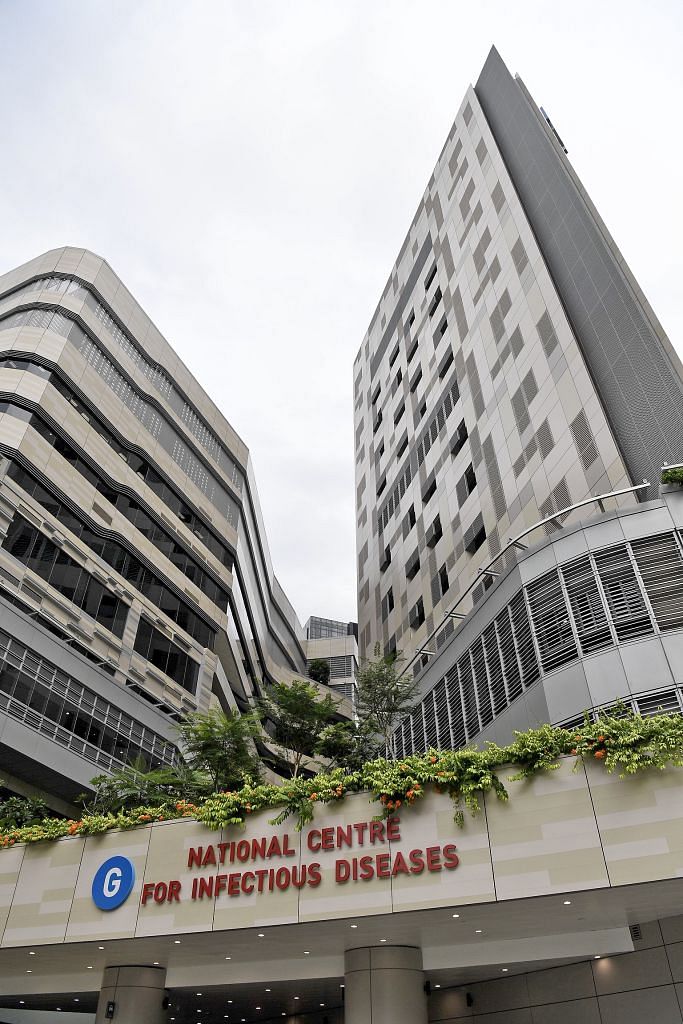Centre to boost infectious disease management
New facility designed to manage outbreak on scale of Sars set to be fully operational by May
Sign up now: Get ST's newsletters delivered to your inbox
Follow topic:
A state-of-the-art national centre for managing infectious diseases is set to be fully operational by May.
The 330-bed National Centre for Infectious Diseases (NCID) is designed to manage an outbreak on the scale of Sars in 2003, said its executive director Leo Yee Sin at a media briefing yesterday.
It stands next to the new Ng Teng Fong Centre for Healthcare Innovation and, together, the facilities in Novena cost $900 million to build.
Professor Leo said the rooms in the 17 wards are spacious, allowing the centre's capacity to be increased quickly if necessary. Doctors and nurses also have ample space to move around while wearing protective gear.
The NCID takes over the functions of Tan Tock Seng Hospital's Communicable Disease Centre (CDC), which closed on Dec 13.
Since then, the NCID has been treating patients at its outpatient clinic.
A key feature of the centre is its high-level isolation unit (HLIU) for treating high-risk pathogens, including haemorrhagic fevers caused by the Ebola and Marbug viruses, as well as bio-threat agents such as smallpox and anthrax.
Patients with or suspected to have these diseases are admitted through a special pathway, including a lift just for them.

The HLIU is a first in Singapore, Prof Leo said.
The unit has four negative-pressure rooms for patients as well as a laboratory for samples to be analysed on-site. At the old CDC facility, samples were sent out to other laboratories.
Said Prof Leo: "If we need to confront conditions that are highly contagious, we can effectively lock down the unit while ensuring that patients can still receive the maximum level of care with all the integrated support facilities and infrastructure that are in the building."
She added that the care received by HLIU patients is equivalent to that in an intensive care unit.
All sections in the centre that handle patients or samples have special features to further prevent contamination.
The centre's ventilation system is designed for air to always flow from higher-pressure "clean" areas like the corridor to lower-pressure "dirty" areas such as the patient's room or laboratory suites where samples are analysed.
Air is passed through high-efficiency particulate air filters, which remove 99.999 per cent of particulate matter, and is treated with ultraviolet radiation before being circulated out of the building.
An alarm is triggered if doors are left open for too long. Separate doors leading in and out of rooms are also programmed to open one at a time.
The NCID houses public health, research and training facilities, and will also facilitate national programmes targeting specific diseases like human immunodeficiency virus and tuberculosis.
The facilities include the National Public Health Laboratory, which carries out tests to track infectious diseases and detect emerging pathogens such as the Middle East Respiratory Syndrome coronavirus.
During a recent spate of food poisoning cases, the laboratory tested samples from the eateries involved - Spize restaurant and the Mandarin Orchard hotel - for salmonella and norovirus.

